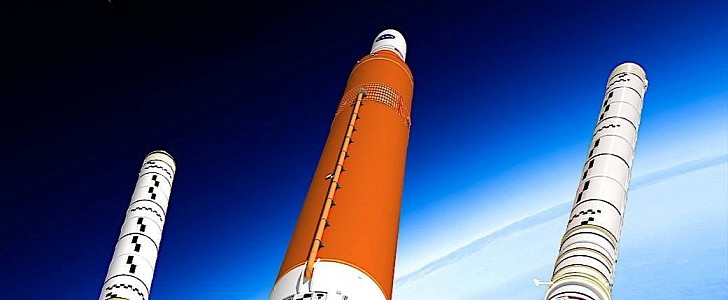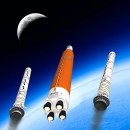On February 12, 2022, NASA plans to kick off humanity’s second Moon exploration program with the launch of the Artemis I mission. If all goes according to plan, that puts the date roughly 73 days away from it at the time of writing. And now we have the means to count down those days.
In a quiet fashion, NASA made a countdown timer to the launch available to the general public – you can access and stare at it for the following two and a half months here.
Artemis I is the first mission in a program that has taken NASA the better part of a decade to put together. It is an uncrewed flight, meant to test and validate the systems that should keep human astronauts alive on subsequent trips to the Moon and its surface.
Artemis relies on the Space Launch System rocket to get off the ground, and the Orion spaceship to get people to the Moon. Later on, when humans will actually attempt to land on and survey the satellite, a lander and a rover will be joining them.
For now, Artemis I consists of only the SLS and Orion. The first integrated flight test will take off from Launch Complex 39B at the Kennedy Space Center, the same location from where the Apollo missions departed.
The mission will go through the usual stages of rocket launching, and once free from Earth’s tight grip, it will head for the Moon. Once there, it will orbit the rock one and a half times at a distance of 38,000 nautical miles, and then head back home, where it should come down in the Pacific Ocean.
As per NASA, the entire Artemis I mission should last between 26 to 42 days. That’s a lot longer than the crewed flights we’ve had so far in Apollo, but remember, there are a lot of systems that need to be properly tested before allowing humans on board.
Artemis I is the first mission in a program that has taken NASA the better part of a decade to put together. It is an uncrewed flight, meant to test and validate the systems that should keep human astronauts alive on subsequent trips to the Moon and its surface.
Artemis relies on the Space Launch System rocket to get off the ground, and the Orion spaceship to get people to the Moon. Later on, when humans will actually attempt to land on and survey the satellite, a lander and a rover will be joining them.
For now, Artemis I consists of only the SLS and Orion. The first integrated flight test will take off from Launch Complex 39B at the Kennedy Space Center, the same location from where the Apollo missions departed.
The mission will go through the usual stages of rocket launching, and once free from Earth’s tight grip, it will head for the Moon. Once there, it will orbit the rock one and a half times at a distance of 38,000 nautical miles, and then head back home, where it should come down in the Pacific Ocean.
As per NASA, the entire Artemis I mission should last between 26 to 42 days. That’s a lot longer than the crewed flights we’ve had so far in Apollo, but remember, there are a lot of systems that need to be properly tested before allowing humans on board.

















